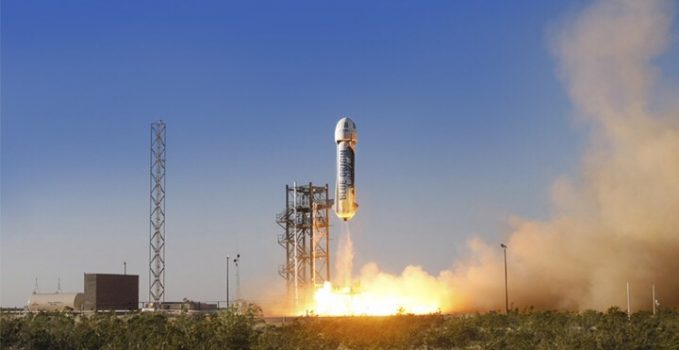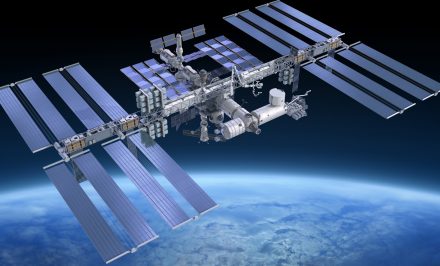Where SpaceX has been trying to land its Falcon 9-rocket for years now, suddenly there’s a company that claims to have pulled that off. But that comparison is wrong. Blue Origin has not pulled off what SpaceX has been doing. Here’s why.
To determine that difference, we have take a quick look at both companies and what they’re trying to do.
SpaceX (founded by Tesla-owner Elon Musk) is a company that offers launches aboard their trusted Falcon 9-rocket. These launches are offered to both private companies like telecom-providers to launch communication-satellites, but also to governments for sending out navigation satellites. The Falcon 9 can deliver payloads to both LEO and GEO.
SpaceX also flies cargo to the International Space Station, using its own Dragon-supply vehicle. This is a contract with NASA, initially for 12 launches of which 3 missions (plus 1 demo mission) have been flown since 2012.
The Falcon 9 has a fairly impressive track record of 17 succesful launches – as well as a few failed ones, including the latest one in June of this year.
Blue Origin doesn’t have the same track record as SpaceX. In fact, it had none before today. The company was founded in 2000 by Jeff Bezos, better known for founding Amazon. Blue Origins mission is to provide ‘low cost access to space for everybody’, meaning space tourism. In a way this can be compared to what Virgin Galactic and XCOR Aerospace are trying to do: Short sub-orbital flights of 4 to 5 minutes before returning to Earth.
One of the most impressive things about Blue Origin’s flight was that it seemed to come out of nowhere. Until now, Blue Origin hadn’t done any noteworthy launches at all – whereas we’ve been seeing SpaceX try (and fail!) for years now. It was that sudden leap in development that is perhaps most impressive.
The economic value of reusing a spacecraft
There’s a very simple reasons both companies are interested in having a landing, reusable rocket: It’s cheap. SpaceX’ launches cost around 61 million dollars at the moment, with the most money being put in a rocket which is discarded after a mere 2 minutes. If a company can make a rocket return to Earth in one piece, it can be refurbished and flown again. That can cut the costs of a rocket launch tenfold.
That’s attractive to a lot of companies. SpaceX tried it first, Blue Origin has done it now, but companies such as United Launch Alliance are currently designing a reusable rocket as well, the Vulcan.
SpaceX’ endeavours
You might’ve heard that SpaceX has been trying to ‘land a rocket’ before, and you’ve probably seen the spectacular footage of a rocket exploding at sea after that landing failed.
This is now being compared to what Blue Origin has done, and you’ll read a lot of headlines saying ‘Blue Origin has beat SpaceX at their own game.‘ That is false.
What that doesn’t take into account is that SpaceX has been using this technology in demos since 2012. Back then, the company ran a program called ‘Grasshopper’, which was an experimental reusable rocket.
The Grasshopper did several test flights, the highest of which went to 744 meters. The flight was recorded with a quadcopter, resulting in this spectacular video:
Technology, incorporated
The Grasshopper program was very distinctly used as a test program, specifically to test the technology that would have a rocket make a controlled landing. After several test flights, the technology was finetuned enough so that it could be incorporated into the regular Falcon-program, which was already flying regular commercial missions to LEO and GEO.
SpaceX implemented the technology in the regular Falcon 9-launches. The company would ;aunch a standard mission, for instance a resupply mission to the ISS, and after putting its cargo into orbit it would try to land the rocket. If that failed, no harm done – the primary mission was at least succesful.
This is a key difference with what Blue Origin does. It built a rocket from scratch, doing a test flight to space and having it come back. While it’s true Blue Origins New Shepard flew much higher than SpaceX’s, it didn’t have a cargo that reached orbit. It was also its prime mission to return to Earth, rather than ‘a nice-to-have side mission.’
Blue Origin did send a prototype of its manned capsule into space, which also came down safely – with parachutes, like Soyuz capsules come down in Kazachstan nowadays.
The difficulty of ‘where space is’
There’s also the discussion of just exactly what space is. This seems a rather stupid question, but in the context of comparing SpaceX to Blue Origin we have to make a distinction.
The fact is, there’s no real definining like for where ‘space’ begins. Our atmosphere stretches out to hundreds of kilometers from the Earth. The most widely accepted border is the Karman Line, which is 100,5 kilometers. This is widely regarded as ‘space’, although the American Navy holds an alternative definition of 80 kilometers.
But reaching space, or crossing this Karman Line, isn’t the hard part. Mankind has been doing that since the 1940s, with the German V2 rocket bombs reaching that altitude on suborbital flights. The tricky part is getting objects (or humans…) into orbit around the Earth – meaning a steady freefall along the Earth’s axis. This was only done in 1957 with the launch of Sputnik.
Blue Origin’s flight did not reach orbit. It went up, an then it went down. That’s fine if all you want to do is send passengers on a short flight so they can say ‘they officially been to space’, but it’s very far from having them be in an orbit around Earth or reaching the International Space Station.
Landing at sea
There’s another key difference between both landings. SpaceX will try landing a rocket on a floating platform in the sea, simply because that’s where the rocket lands when launched from Cape Canaveral in Florida. Landing at sea is obviously a lot harder than it is on land – in one attemted landing, the stormy sea was cause for one failure.
Blue Origin, in their new demo, has attempted a landing on Earth, similar to the first test flights of SpaceX’ Grasshopper.
Impressive? Kinda.
So, did Blue Origin really ‘beat SpaceX’? Not quite. Yes, their rocket went higher up – but that’s not the most impressive feat of a launch. Getting cargo into orbit, delivering it to a space station, THEN land at sea… Now that’s impressive.
That’s not say Blue Origin has not pulled off something incredibly. Indeed, never before has a rocket returned from Earth to space – orbital or not. Also, it shows a tremedous leap forward by a company that many didn’t pay a lot of attention to. And that might be just as impressive.
Tags : Blue Origin, Grasshopper, New Shepard, reusable rockets, spaceflight, SpaceX



